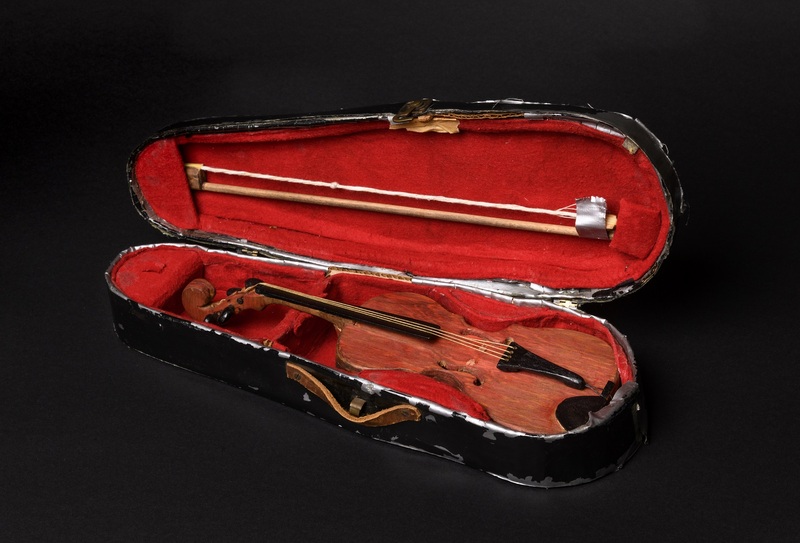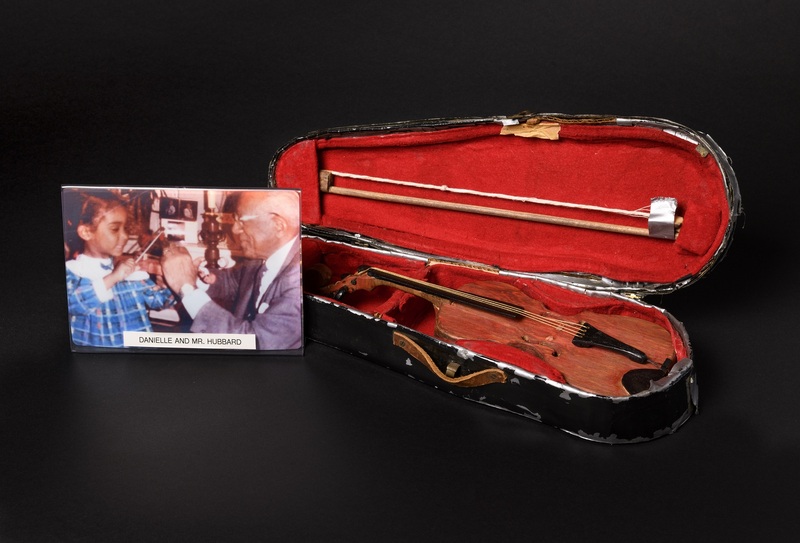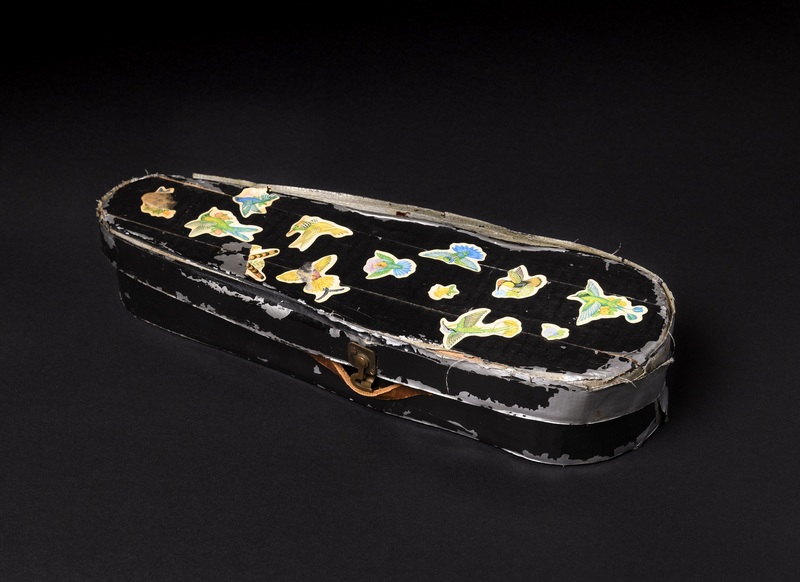-
Title
-
Toy Violin and Case
-
Description
-
Handmade child's violin and instrument case, late-20th century. Built by Earl Hubbard, a self-taught violinist and music teacher from the Sourlands' Black community, for his niece Danielle Thompson.
-
African American stringed instrument makers, otherwise known as luthiers – are rarified; Earl Hubbard’s work fits within a broader (if under-recorded) tradition of Black craftsmen building instruments when commercial options were inaccessible or unaffordable. Described as a teacher and violinist, Hubbard was also a self-taught luthier. A luthier (pronounced LOO-tee-er or LOO-thee-er, from the French luth for "lute") is a skilled craftsperson who designs, builds, repairs, and restores stringed instruments—particularly those of the violin family (violin, viola, cello, double bass), as well as guitars, lutes, mandolins, and other fretted or bowed instruments.
Although Hubbard considered his niece’s handmade instrument a “toy” violin as pictured on Page 2; the photo gives the distinct impression that it was used for teaching and instruction. However choosing a violin's size is actually complex and is dependent upon the human form of the musician that it is intended (Moore Brothers Music, n.d.). For Danielle a growing child, a working violin would be small so that she could master its technique. This may have been Hubbard's decision for determining it a "toy". The violin itself was likely solid wood, perhaps of spruce for the front (soundboard) and sides with a maple backing, that was carefully carved and varnished for durability. Additionally crafted were the neck & fingerboard, pegbox, strings & tuning and bow components. The sound was a warm, resonant tone, unlike plastic toy violins commercially produced by 1980s companies such as Playskool’s "Tune-Time Violin" or the Fisher-Price "Musical Merry-Go-Round Violin".
As earlier mentioned, Earl Hubbard was in rare company. A verified search identified two Black gentleman luthiers, but neither was tied to violin craftsmanship. Referenced in Fisk University Archives, Jim "Uncle Jimmy" Thompson (1870s–1930s) was an early 20th-century Black luthier from Tennessee, where he built banjos and fiddles for local musicians (Work 1998). Making history as the first U.S. Black woman luthier, Amanda Ewing – violin craftswoman, carries the title as determined by a team of Tennessee historians (Skowronski 2025). Yet there is a modern day Black man named Woody Phifer. According to Jonathan Bernstein, Woody has been in the business of making custom guitars for over 30 years, and is still being denied bank loans to expand his business in upstate New York (Bernstein 2021).
Even in his later years, Hubbard continued to be recognized as a violinist in the Pennington New Jersey area. In Frederick Boseley LeCompt’s obituary, staff writer Joseph Dee writes “Among the musicians who went to the service, one carried a violin. Earl Hubbard…in his 80s said he had to get inside…for a musical tribute to a man that embodied music” (Dee 1989).
-
Contributor
-
Stoutsburg Sourland African American Museum
-
Date Created
-
(c. 1980)
-
Creator
-
Thompson, Danielle
-
Rights
-
Rights assessment is your responsibility. This material is made available for noncommercial educational, scholarly, and/or charitable purposes. For other uses or for more information, please contact [the repository, + contact info].
-
Identifier
-
2024.2.3.1, 2024.2.3.2
-
Format
-
Physical Object
-
Extent
-
3 items
-
Spatial Coverage
-
Unknown
-
Publisher
-
SSAAM
-
Is Part Of
-
2024.2.3.1 and 2
-
Subject
-
Violin
-
Toys
-
Workmanship
-
Artisans
-
Violin makers






